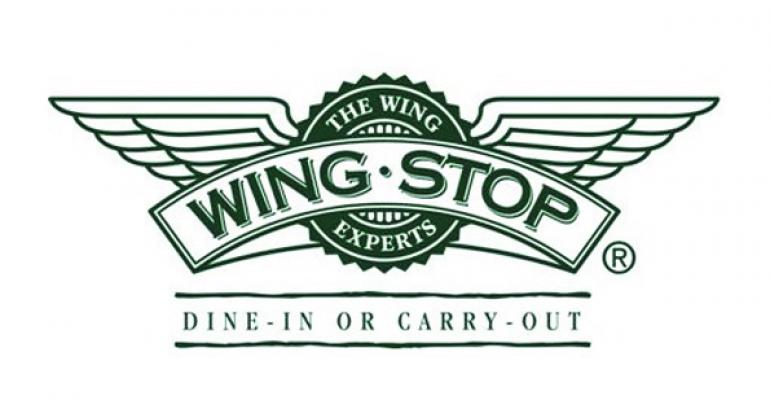Wingstop Restaurants Inc. has been expanding both in the United States and abroad, opening its first restaurant in Southeast Asia, in Singapore, in December.
The 622-unit quick-service operator will soon announce agreements for Indonesia and The Philippines, said Charlie Morrison, president and chief executive of Richardson, Texas-based Wingstop. The brand opened its first international restaurant in Mexico in 2011, and it now has 20 units there. Wingstop also has two units in Russia, in Moscow and Rostov, northeast of the capital.
“We have properties secured for three more restaurants in and around the Moscow area,” Morrison said. “We hope to open four or five this year in Russia alone.”
Wingstop has a domestic average unit volume of $974,000. In 2013, same-store sales rose 9.9 percent — its 10th consecutive year of same-store sales increases. Average investment in a Wingstop unit is about $350,000 for a typical 1,600- to 1,800-square-foot restaurant, Morrison said.
RELATED
• Wingstop names Flynn Dekker CMO
• Wingstop names first VP international ops
• More international restaurant news
The brand, which was purchased in April 2010 by Atlanta-based Roark Capital Group, will celebrate this year the 20th anniversary of its first restaurant opening in Garland, Texas.
Morrison recently discussed the brand’s expansion into international markets with Nation’s Restaurant News.
What was the biggest consideration in opening or expanding the brand abroad?
The first country we went into was Mexico. Our brand has been successful in Texas, especially in South Texas, where the Hispanic population is quite strong. We’ve been able to grow the brand in Mexico because of the affinity people [there] have for dark-meat chicken and, most notably, wings. For us, we felt it was a great fit and a good strategic place for us to be.
What are your considerations in other global markets?
There are a few areas of the world where we believe there is great opportunity for growth, pretty much for the same reason — Southeast Asia being one. Years ago, before Wingstop and other brands emerged that were focusing on selling chicken wings, most of the wings in the U.S. that were coming off the chickens were being exported into these countries, where there is a higher demand for the product. Much of that product is consumed as an appetizer and not a center-of-the-plate item. So when you put that all together and recognize there is great demand, there’s affinity for the wing as a product — more so perhaps than breast-meat chicken — we think we have a great opportunity over there.
When did you first open in Mexico and how many units do you have there now?
We are up to 20 restaurants in Mexico. We opened our first one in 2011, and we have recently seen a more aggressive expansion. Like in any international market, you have a few restaurants that you prove the concept with and start to incubate and build the infrastructure around. Our partners hope to be on a pace soon of opening a restaurant a month down there as they start to sub-franchise the brand. We’ve been putting a lot of work into supply-chain development, marketing platforms and the like to prepare the brand for aggressive growth.
What were some of the learnings from Mexico?
No. 1, international markets tend to work better for brands when you modify the décor to be a little more contemporary, which we needed to do. And the service platform can vary depending on what the consumer demands of you in various markets. So in Mexico, more of a hands-on, higher-touch service model is expected than takeout or take-home consumption. We had to accommodate our platform for more service, so when you walk in, you order and are seated at a table and we deliver the product to you, whereas in the U.S., our brand is centered around a take-home occasion.
Any changes in menu offerings?
Our 10 flavors for Wingstop have been portable for every market we have gone to. They are generally well accepted. It certainly gives us a platform to modify flavor to appeal to local needs and cultures.
What are your most popular wing flavors?
Our flavor profile in Mexico and the U.S. is very consistent. Our Original Hot, which is our traditional Buffalo-style wing, is our highest mixing flavor. Now, when you go to Singapore, consumers are typically not as inclined to like flavors with vinegar in their base, which Buffalo-style sauces do. So for them, garlic-parmesan and lemon-pepper are going to be the primary flavors. Russia surprised us. We expected the sweeter flavors, such as barbecue or Hawaiian or teriyaki to succeed, but we’ve been surprised. Our Original Hot has done quite well, and the general mix of flavors has been consistent with the U.S.
What do you anticipate for development going forward?
I think it is going to be mostly domestic. We sold more commitments last year than in any previous year. The vast majority of those were domestic deals. We have a pipeline of more than 500 restaurant commitments, not including the two new countries. We believe that prepares us for growth of as many as 70 new restaurants in the U.S. this year and 15 internationally, so about 85 restaurants systemwide.
Contact Ron Ruggless at [email protected].
Follow him on Twitter: @RonRuggless




![Smoothie King Ribbon Cutting Terminal A_01[95].jpg](https://www.nrn.com/sites/nrn.com/files/styles/article_related_thumb_standard/public/Smoothie%20King%20Ribbon%20Cutting%20Terminal%20A_0195.jpg?itok=WNYpNsAy)
